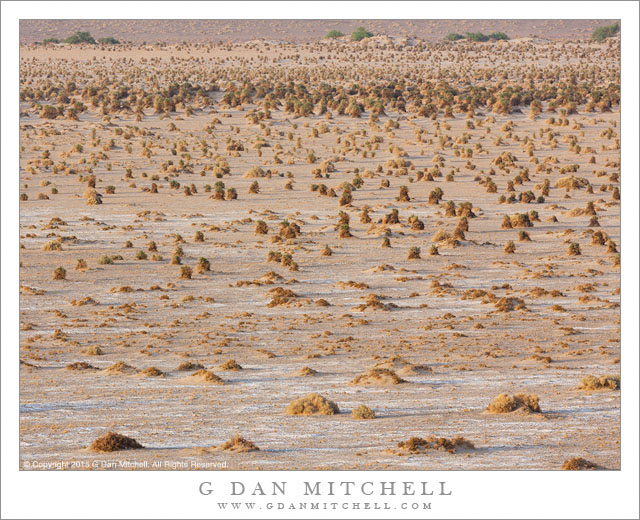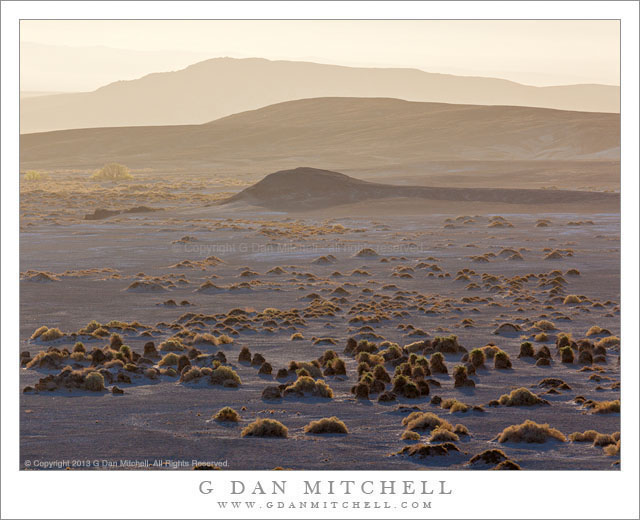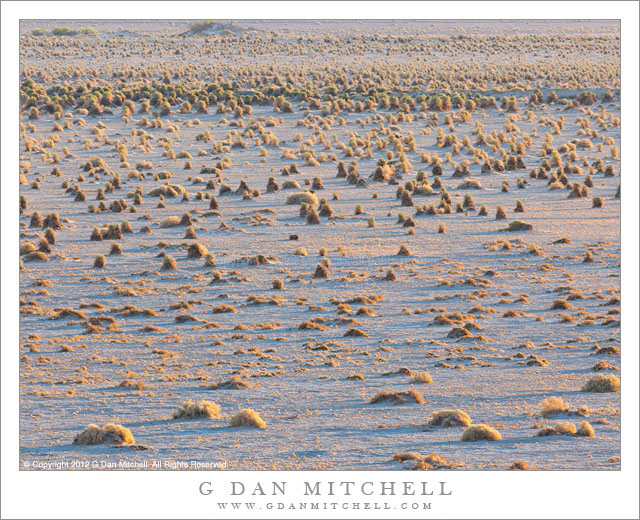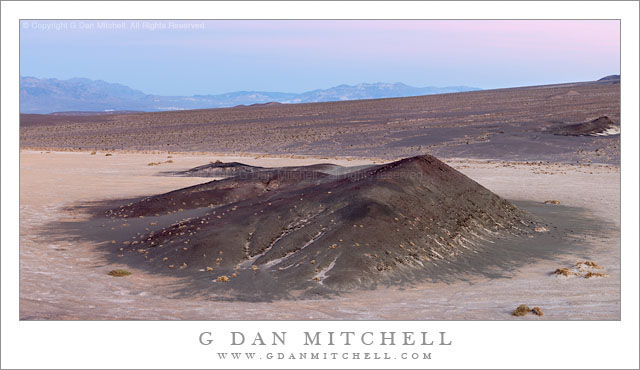
Devil’s Cornfield, Evening. Death Valley National Park, California. April 1, 2015. © Copyright 2015 G Dan Mitchell – all rights reserved.
Arrowweed plants at the Devil’s Cornfield
I’ll confess upfront that one reason I made this photograph is that I barely have any of this specific site in Death Valley, one that is well-known enough to warrant a place to pull over on the highway and look at it. I have not found it to be an easy place to “see” photographically.
The “corn” is actually the arrowweed plant, whose roots seem to manage to block and trap blowing sand and dust on this playa-like area. As the plants grow they manage to hold onto these piles of soil and thus group above their surroundings a bit. I made the photograph from a slightly elevated position and during evening hours where the golden light emphasized and enhanced to colors of the plants.
 G Dan Mitchell is a California photographer and visual opportunist whose subjects include the Pacific coast, redwood forests, central California oak/grasslands, the Sierra Nevada, California deserts, urban landscapes, night photography, and more.
G Dan Mitchell is a California photographer and visual opportunist whose subjects include the Pacific coast, redwood forests, central California oak/grasslands, the Sierra Nevada, California deserts, urban landscapes, night photography, and more.
Blog | About | Flickr | Twitter | Facebook | Google+ | 500px.com | LinkedIn | Email
Text, photographs, and other media are © Copyright G Dan Mitchell (or others when indicated) and are not in the public domain and may not be used on websites, blogs, or in other media without advance permission from G Dan Mitchell.



